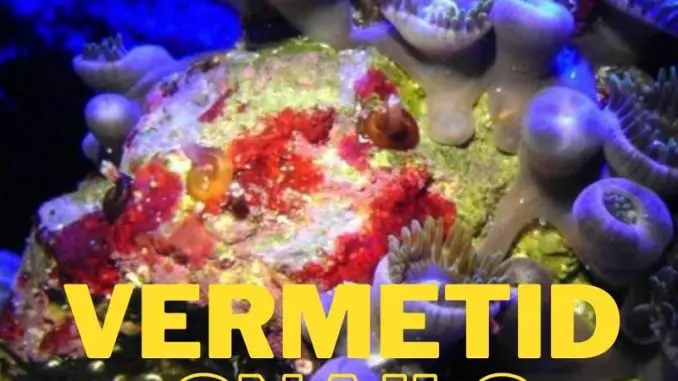
Sometimes keeping an aquarium doesn’t go to plan. There are lots of things that can go wrong, such as disease, pollutants, and pests.
The latter of these is what we’re discussing in this article, specifically Vermetid snails. These are a problem for aquarists with marine tanks containing corals.
An infestation of Vermetid snails can be costly, they will soon lead to the death of your corals.
Even the most cautious aquarists experience issues with these snails occasionally, so it is important to know how to deal with them. Removing the snails quickly is the best way to protect your corals.
There are many methods you can use to eradicate Vermetid snails. We will talk you through the most common examples, after fully explaining everything else you might need to know about these marine gastropods.
TABLE OF CONTENTS
What Are Vermetid Snails?
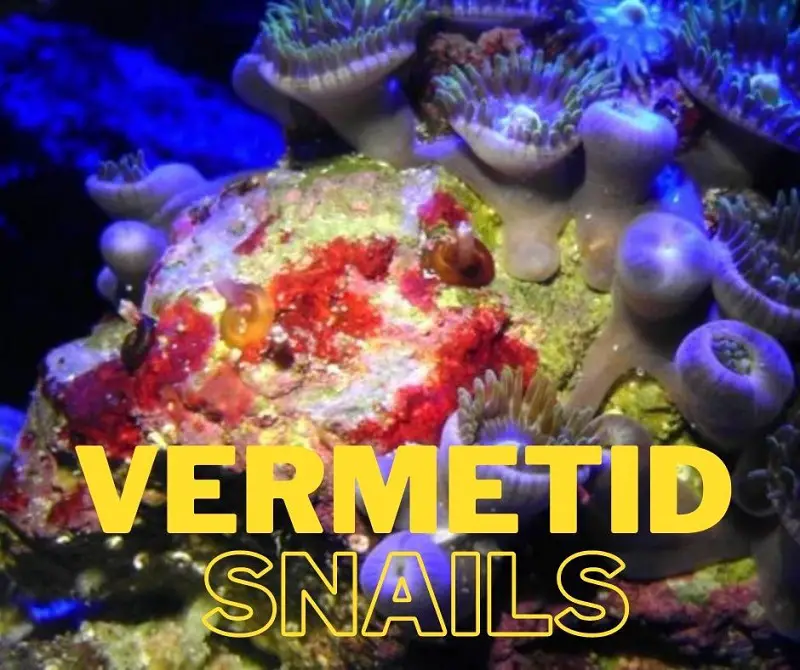
Vermetid snails are pests that are well adapted to entering an aquarium and taking hold. They cause problems for corals in marine setups, so aquarists should remove them as soon as they can.
They aren’t just one species, but actually a whole taxonomic family (Vermetidae). They’re small gastropod mollusks that are found exclusively in the marine environment.
There are over 160 species that make up this family, there are probably even more that still need describing.
It’s extremely difficult to tell most of the species apart. They look so similar that even marine biologists struggle to find defining characteristics to distinguish them. Though they look virtually identical, we can be sure that there are different species due to DNA sequencing.
You will not be able to determine which species is in your aquarium, but it is largely irrelevant.
You might not recognize them as snails because of their strange tubular shells. This can make them look like worms, which is why Vermetidae are sometimes referred to as Worm Snails or Worm Shells.
Some of these tubes are used as temporary feeding tubes. If needed, a snail can break them down and remold them in a different position. This can help them grow around the object, increasing their success when competing for space.
It is possible for Vermetid snails to be used as bioindicators. By looking at their distribution and behaviors, scientists can assess sea-level changes, temperature changes, and ocean acidification.
How to Recognize Vermetid Snails
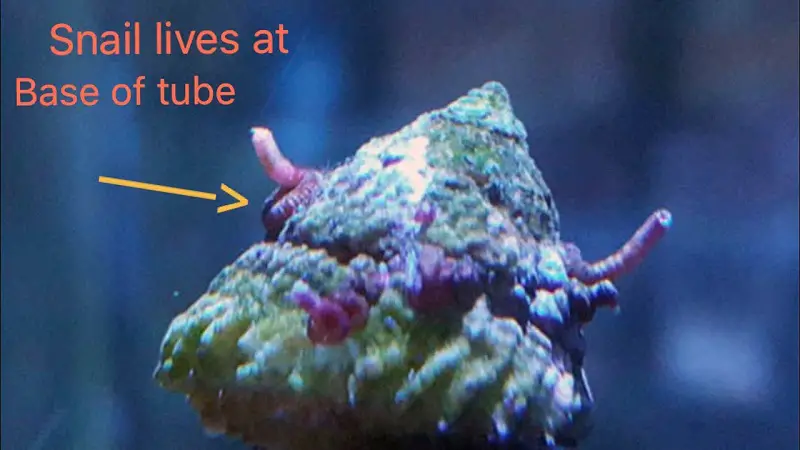
This family of snails is very recognizable and can be easily identified amongst a crowd of other families. This is mainly due to their worm-like appearance, which we have already alluded to.
They don’t have the classic coiled shell that might come to mind when you think of snails, or at least adults don’t.
A Vermetid snail’s shell becomes uncoiled in their late post-larval stages, leaving a long and tubular shape.
The shells have a large calcium component, so they can be quite strong and resilient. They attach onto surfaces too, which adds to their fortification. Once they have attached, they can start growing their shell.
The shell won’t necessarily grow in a straight line. Sometimes they wrap around in circles and other times they create a branched effect.
Their color falls somewhere on a scale of white to brown, but they’re usually quite pale. There isn’t a pattern on the shell, but you can notice growth lines. These are dark stripes that appear along the length of the tube as it gets longer.
The most noticeable difference between species of Vermetid snails is their size. Some are only half an inch once mature, but others can reach 4 inches.
A common feature of most snails is the operculum, which acts as a seal at the entrance of the shell which can open and close. Only a few Vermetid species have this feature.
An operculum isn’t essential because the actual snail doesn’t live in the tube, it sits at the base where the shell attaches to a surface.
How Do Vermetid Snails Feed?
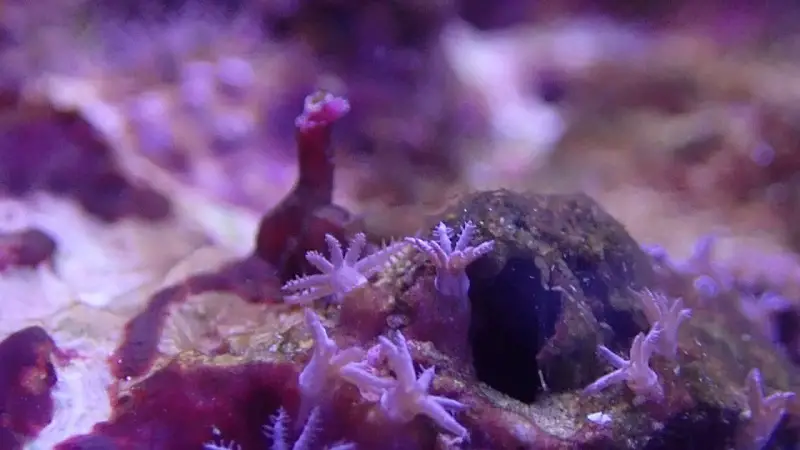
You might find yourself wondering how these snails feed if they remain in one place for most of their life, the answer is through suspension feeding (filter-feeding).
This is where an organism feeds by extracting food particles that are suspended in the water. They don’t seek out the food (they can’t even see the small particles), they rely on food to float past them.
Most suspension-feeding animals have a specialized filtering organ; the water passes over the organ and food is strained from it. Vermetid snails don’t have this.
Instead, they use a mucus net. They excrete this mucus net and let it spread into the water, though it tends to stay low and close to the surface they’re on.
As water flows across the net, food is trapped due to the sticky nature of the mucus. The snail can then draw the mucus back in and consume the food.
The mucus net stays out in the open for about half an hour at a time, to ensure that plenty of water flows across it and therefore increases the potential yield of food.
A water current is crucial for Vermetid snails to feed effectively. If the water is still, food particles will not be forced into the path of the mucus net. Some individuals fail to even produce nets in still water.
The typical diet of these gastropods is made up of plankton, algae, and detritus, but any small organic particles will be drawn in and consumed.
How Do Vermetid Snails Spawn?
Vermetid snails must produce lots of young and have them develop quickly if they are to successfully establish themselves in a new area. Their reproductive behavior is one of the key reasons why they are effective invaders.
Since these snails are sessile, it could be challenging for males and females to mix gametes for fertilization. However, the mucus net used for feeding helps to solve this reproductive problem.
Males release spermatophores which float in the water column until they come into contact with a female’s mucus net, which they stick to.
When the female draws in the mucus net, they transfer the spermatophores to their mantle cavity via their mouth.
The mantle cavity will contain dozens of egg capsules, which can each hold up to 40 embryos. The number of capsules and embryos will vary between species and between individuals.
Fertilized eggs are released and will soon hatch to reveal tiny juvenile Vermetid snails, though they will be unrecognizable compared to the adults you might spot in your aquarium.
The innate drive of juveniles is to settle on a hard, inert surface as soon as possible, typically less than 24 hours. Juveniles are particularly vulnerable while so small and floating in the water, once attached they are safer and can begin to grow.
The juveniles that manage to successfully attach to a surface will begin developing their adult form within 2-3 days. They can then start building a shell.
Why Are Vermetid Snails a Problem?
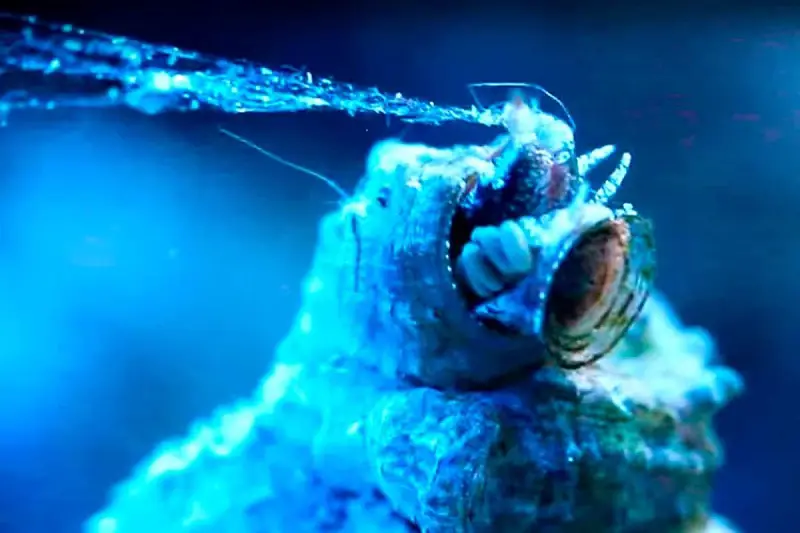
Aquarists do their best to prevent Vermetid snails from entering their aquarium and remove them as quickly as possible if they do manage to enter. Can these snails not live side by side with the inhabitants of your tank?
The main risk is to corals. If a snail is attached to a coral, its mucus net can smother the corals when they feed.
This can flatten coral growth, leading to fewer polyps, more sedimentation, and less particulate capture. Overall, the corals can’t get enough food over time and eventually die.
This problem has been observed in the wild. Coral cover is dramatically reduced in areas with larger Vermetid snail populations.
Some corals are more at risk than others, particularly stony corals. It can depend on the Vermetid species too, some produce a more harmful effect.
Coral crabs are thought to help deal with pesky Vermetids in the wild. They don’t kill them directly, but their ‘housekeeping’ activities on a reef can move the mucus net that might be bothering the corals.
Some aquarists report that these snails haven’t caused any negative effect on their corals. It is always safest to remove them from the tank as soon as you have spotted them though.
It is important to act fast because they reproduce in large numbers and reach their adult form rapidly, so they establish themselves in an aquarium very quickly.
How do they Enter an Aquarium?
It is very easy to accidentally introduce Vermetid snails to your tank without even realizing it.
Anytime you add something into your aquarium, you could be adding these gastropods too. They will then begin to spread around their new environment.
These pests are common in pet stores. They subtly attach to surfaces around their enclosure, usually live rocks or corals that you might want to buy.
They can be introduced when you add livestock too; a few eggs might be floating in the water. They are too small to spot, so they get transported unseen and can begin to develop in your setup.
Once in your tank, it could take a few weeks before you spot them. Usually the production of strange tubes and ‘webs’ give them away.
It is unfortunate that Vermetid snails are so common in pet stores. You should always be careful with new purchases because you can never guarantee the quality of their stocks.
Other pathogens (parasites, bacteria, and viruses) can be introduced in the same way.
How to Remove Vermetid Snails
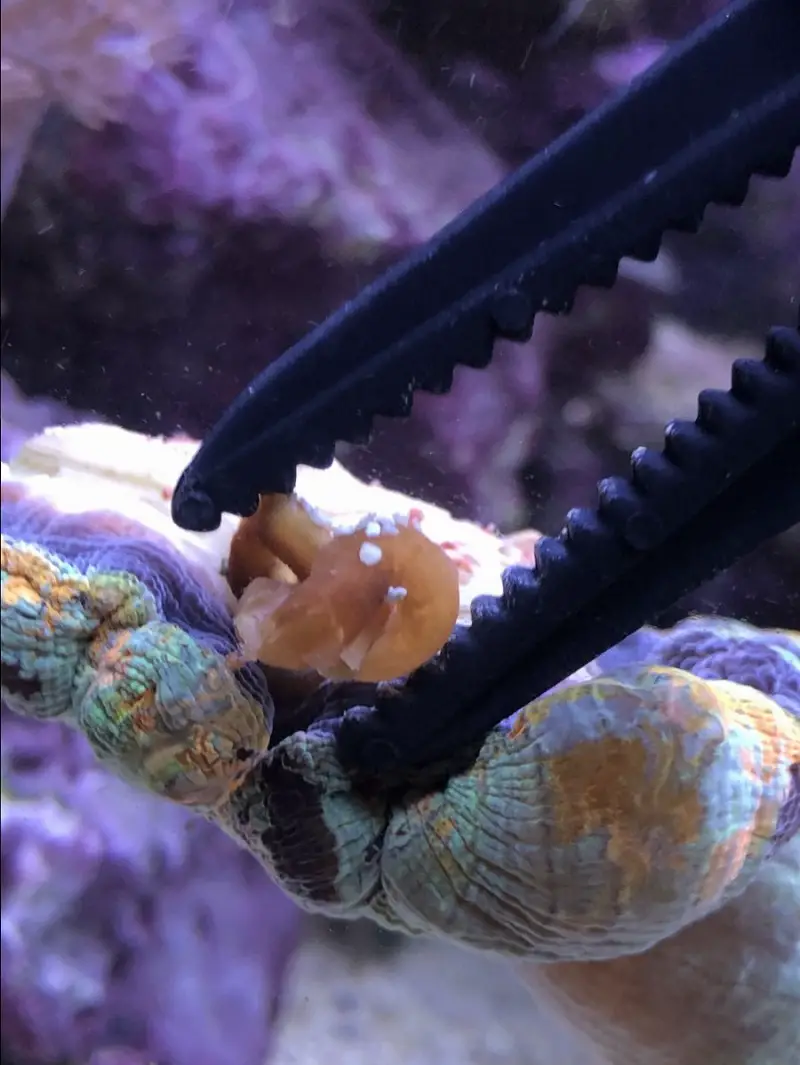
These snails can work their way into any aquarium. Even if you’re extremely cautious, they can pass under the radar and enter your tank without you realizing it.
Once you’ve spotted Vermetid snails attached to surfaces around your tank, you must act quickly. The sooner you spot the problem the sooner you can deal with it, and the less harm they can do.
If left to their own devices, they will multiply and have a greater chance of harming your corals.
Unfortunately, these snails are tough and hardy, both to physical damage and water conditions. They have evolved to be resilient so that they can exist in reefs where they are unwanted by the rest of the community.
Some aquarists give up and simply start a new aquarium, but you don’t need to do this. There are a few ways you can combat a Vermetid invasion.
Below we describe some common methods that people use in order to remove their unwanted snails.
Manual Removal
This is the most hands-on method since you’re actively getting rid of each snail yourself, but it is also one of the most effective. It’s worth putting in the extra effort.
Broadly speaking, you cut off each snail that you see on your corals.
The easiest way to do this is by using bone cutters (or coral cutters), but dental tools or scalpels work as a backup. Take your time when using these tools so you don’t accidentally hurt yourself.
Remove the coral you’re working on from the tank if you can; this will give you a good view of the whole animal. You might spot more Vermetids hiding in areas you couldn’t see before.
When cutting them off, it is essential that you remove the base because this is where the actual snail sits most of the time. They always retreat to the base if they sense danger.
Cutting off just the top portion would do no damage to the snail; you’d just be removing some empty shell. They will begin to regrow this straight away.
It might take you a while to find and remove all of the snails, but there is no escape for them.
Puncture
Though this is another manual method, it requires much less effort.
Sometimes referred to as the lancing method, this involves using a sharp needle-like tool to puncture the shell and base of each snail.
A sewing needle, awl, or ice pick would work well.
Ensure that the needle penetrates the base of the shell; this is where the snail will be.
One issue with this method is that the dead snails are left in the tank. These will be broken down, which could cause an ammonia spike. This will depend on the number of snails you kill, the effectiveness of your filtration, and the size of your tank.
It can be a messy method too, since you could be cutting up the snail. Remove the coral you’re working on from the tank if you can.
Glue
This is quite a simple method in principle. Using safe glue, cover the end of a snails’ tube(s). This will cut off their access to oxygen and food. They won’t be able to reproduce either.
Before long, the snail will die.
This method can be useful if the base of the shell is difficult to get to. You might even be able to access all of the tubular shells without removing coral from your tank.
Similar to the puncture method, you are left with dead snails in your tank which could cause an ammonia spike. Keep this in mind.
Hydrochloric Acid
If your Vermetid snails are being particularly persistent, then this extreme method could be more effective.
Once you have identified the rocks and sponges that are afflicted with snails, remove them from the tank.
You can then wash them with a solution of 10%-20% hydrochloric acid. This should eat through the snails, but if they remain then you can soak the rocks in the solution for a couple of days.
The hydrochloric acid will also kill all the beneficial bacteria that cover most surfaces on your tank. This is why the method is so extreme.
You must keep yourself safe when handling hydrochloric acid because it is very harmful to your skin. Use safety equipment, including gloves, eye protection, and a respirator.
This method should only be used as a last resort if nothing else seems to be working. Other methods are safer and have less of an effect on the rest of the aquarium environment.
Predation
This is a natural method that uses a very simple principle. If a species is known to eat Vermetid snails, then adding it to your aquarium should result in the Vermetids being eaten.
There aren’t many species that have been found to eat Vermetid snails. Bumble Bee Snails have been reported to eat them, but they prefer other foods so some individuals might refuse to eat them.
Yellow Coris Wrasse and Emerald Crabs have also been suggested to be effective, but the same reliability issues apply.
Depending on the position of the Vermetid snails, it might be impossible for other creatures to get close enough to eat them.
Remember that any organisms you add will increase the biological strain on your filtration system, so make sure you have the capacity for extra tank mates.
You should also double-check that there won’t be unexpected consequences from introducing a new species, such as compatibility issues.
Reduced Feeding
Without access to food, Vermetid snails will eventually starve. By reducing the amount of food you introduce to your tank, the less particulate food will be floating in the water for the snails to filter out.
To prevent starving your corals too, you will have to spot feed them, since you’re taking away their suspended food too.
Another way to reduce the food available for the snails is to use coral snow.
Coral Snow is a product that functions as a water clarifier and biological facilitator. Overall, its main goal is to keep the aquarium clean by removing pollutants from the water.
By adding coral snow to your tank, you can reduce the number of particles that are suspended in the water, reducing the food available for Vermetid snails.
This is a slow method for removing snails, so it could take a while before you know if you have been successful.
Preventing Vermetid Snails
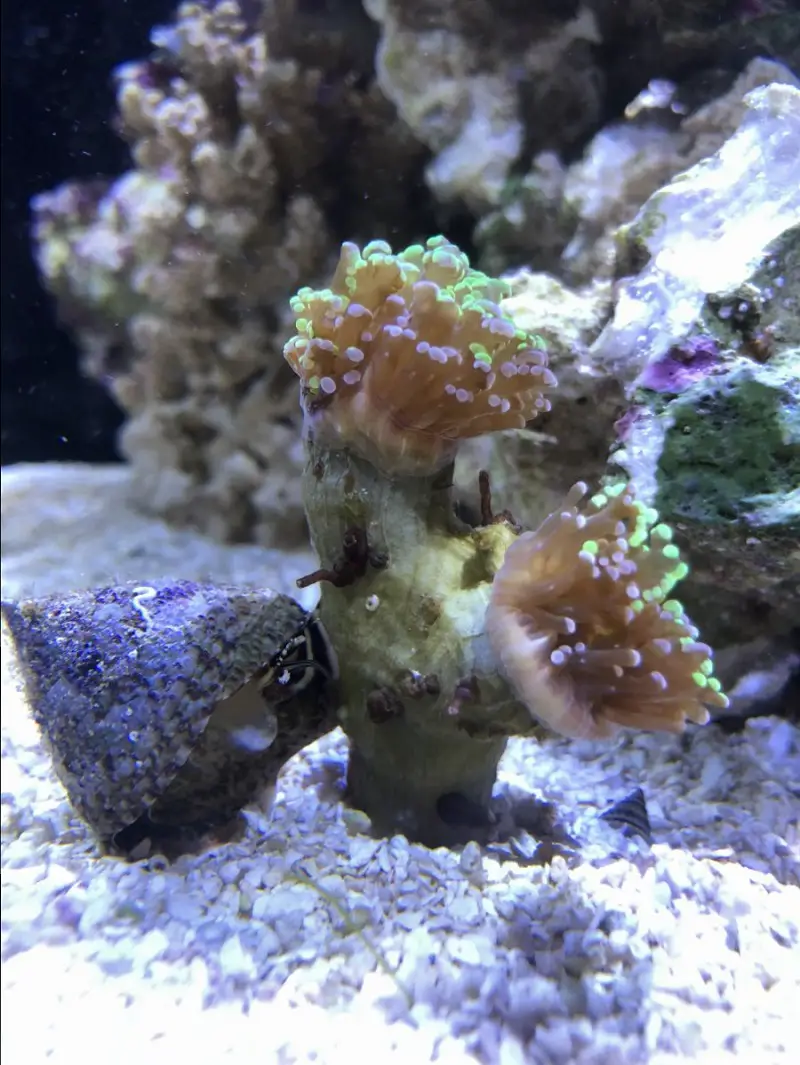
Preventing the snails from entering your aquarium in the first place is the best way to protect your corals. An outbreak can be very difficult to deal with so save yourself the hassle and plan ahead.
Quarantining is the best prevention method. Anything that you buy for your tank that may have come into contact with biological material should be kept separately for a while.
You can never be sure that the source of your purchase doesn’t have a Vermetid snail infestation. If you actually spot these snails in the shop, never buy anything from there, it’s not worth the risk.
You should quarantine corals for a particularly long time; at least a month. This gives you a chance to observe them and look for snails. If you spot some, you can deal with them without introducing them to your main aquarium.
Even with quarantining, some snails might accidentally reach your aquarium, but we have listed many ways for you to get rid of them.
Summary
If you’re having a problem with Vermetid snails, hopefully after reading this you now have an idea of how to combat them.
This family has evolved to be resilient; they are well designed for entering a new environment and quickly establishing themselves. This is clear from their anatomy, reproductive activities, and feeding behaviors.
If you don’t have a problem with these snails yet, you should still be thinking about preventing them from entering your tank. That being said, even with quarantining they can still sneak in.
We have outlined a variety of ways to remove them. Some might be more appropriate for you than others, so make sure you have read through each method carefully before deciding.
For example, manual methods should be attempted before using acid, to try and reduce the impact on your setup. Maybe you’ll find luck with changing your feeding practices or introducing predators, which are much less extreme.
Though the situation might be frustrating, it is important to remember that you’re not helpless, there are lots you can do. After one or two attempts, your Vermetid snails could be gone for good.
Have you experienced Vermetid snails in your aquarium before? Let us know what happened in the comments below…

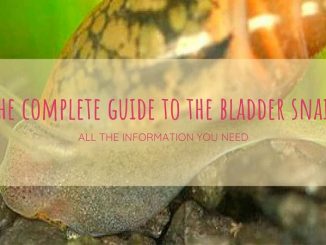
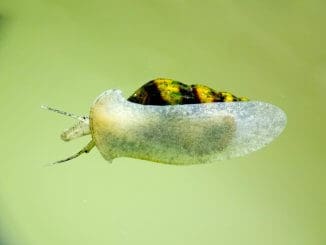
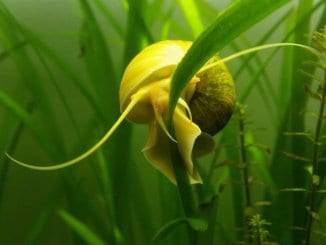
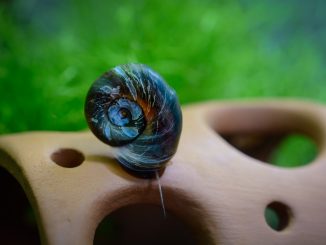
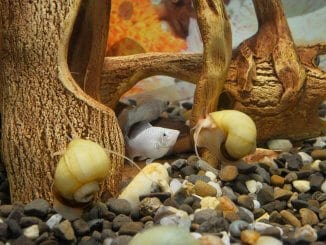
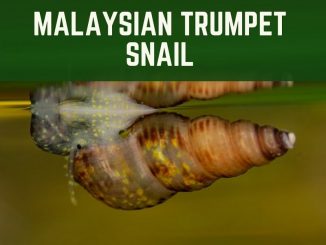
Be the first to comment